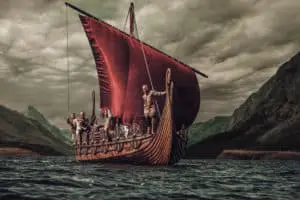The Global Impact of Comic Books: Discover Cultural Influence from Superheroes to Manga
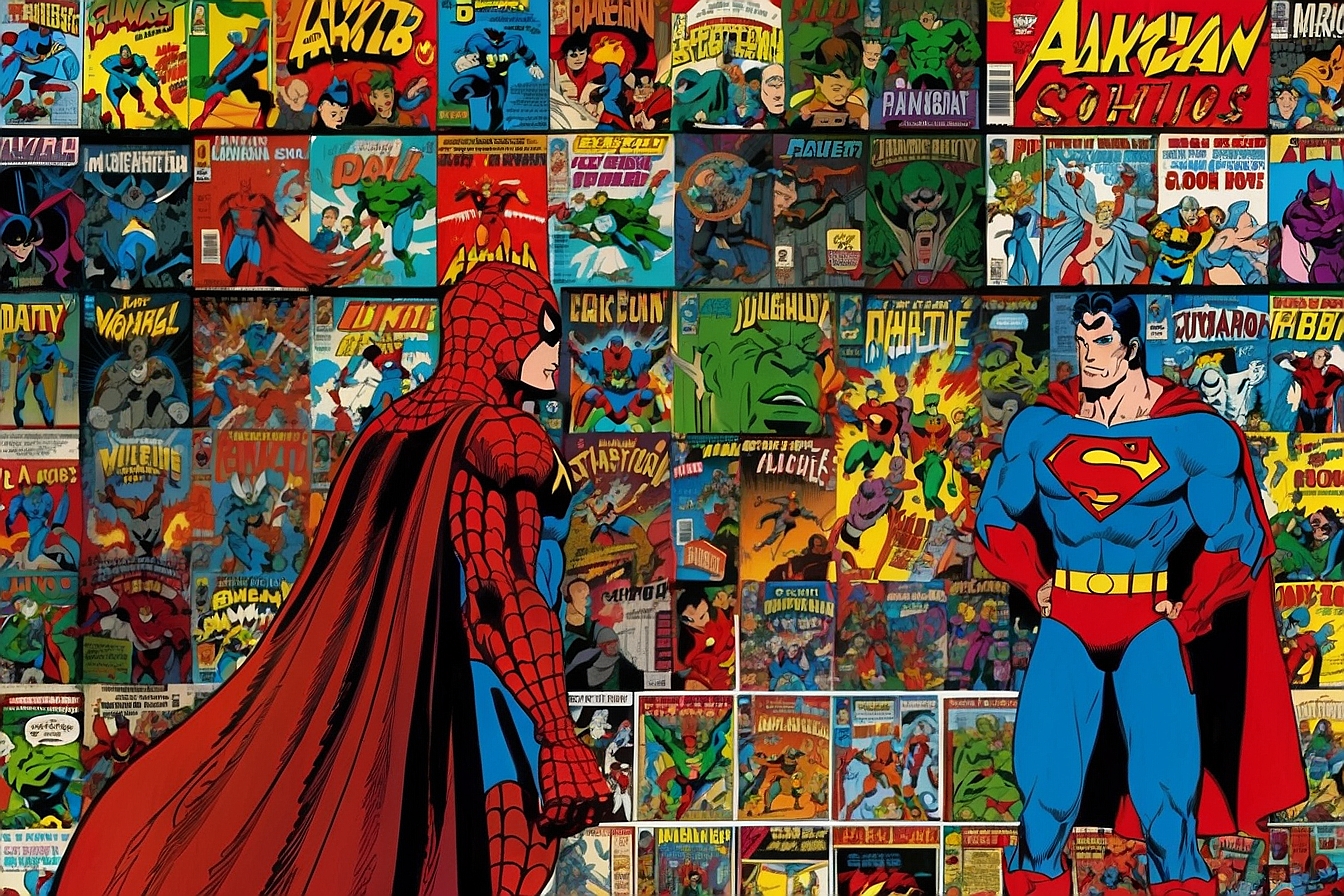
Updated On: April 15, 2024 by Fatma Mohamed
Comic books, once considered mere pulp entertainment for children and adolescents, have burgeoned into a significant cultural force with global ramifications. From the early days of caped crusaders and vigilant heroes, they have woven complex narratives that resonate with diverse audiences, immortalising characters like Superman, Batman, and a plethora of manga icons. Their stories have not only shaped the cultural and societal norms but also reflected the changes within them. As such, comic books offer a unique lens through which to explore the growth of popular culture and societal values across different eras and regions.
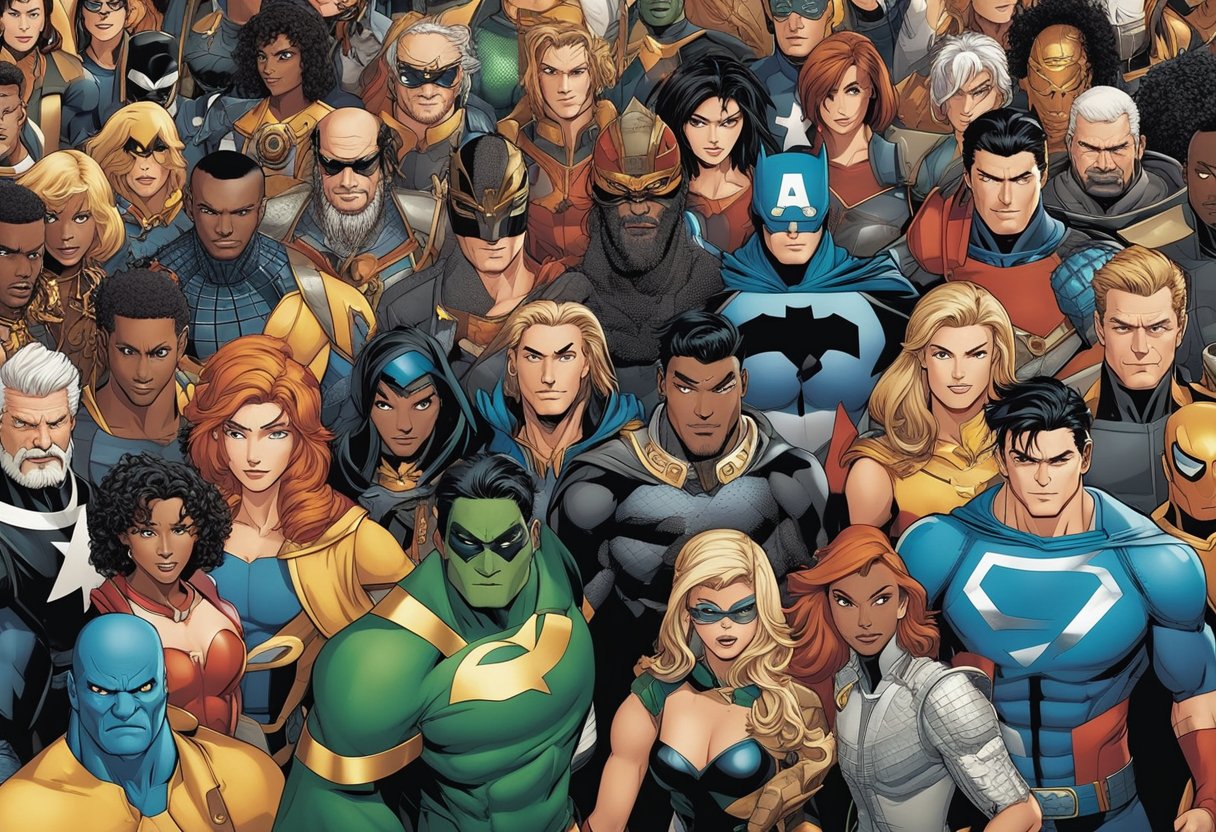
Manga, Japan’s stylised contribution to the comic book world, has similarly left an indelible mark on global pop culture. The widespread appeal of manga showcases the narrative reach and artistic innovation inherent in these graphic stories, drawing audiences into genres that span from fantastical adventures to poignant dramas. The business of comics, too, has evolved into a formidable industry, stretching its influence through movies, television, and merchandise, thereby embedding these narratives deeper into the fabric of international pop culture.
Table of Contents
The Historical Roots of Comic Books
Comic books have become a global phenomenon, intricately linked with history and culture from their initiation to the diverse forms they take today.
War and Comics: A Symbiotic Relationship
The relationship between war and comics has been particularly significant, with comics serving as both propaganda and commentary during times of conflict. World War II, in particular, saw comics being used to boost morale and provide escapism for soldiers and civilians alike. Iconic characters such as Captain America were born from the need to embody patriotism and the fight against tyranny.
The Golden Age: American Comics’ Rise to Fame
The late 1930s to the early 1950s marked the Golden Age of American comics, a period when the comic book industry experienced a surge in popularity. Superheroes like Superman and Batman entered the scene, quickly becoming American cultural icons. During this era, comic books became a distinguished aspect of entertainment, cementing their place in American pop culture and expanding the influence of the comic book industry globally.
East Meets West: The Emergence of Manga
Parallel to the rise of American comic books, Japanese comics, known as manga, began their journey to international fame. Post-World War II, manga emerged as a powerful storytelling medium, reflecting Japan’s cultural ethos and historical experiences. Osamu Tezuka’s creations, often hailed as the godfather of manga, helped popularize the form and ultimately led to manga’s widespread acceptance in the West, creating a vibrant cultural exchange in the comic book world.
Cultural and Societal Influences of Comics
In exploring the vast impact of comics on global culture and society, we uncover their power in both reflecting and shaping contemporary issues and values. Comics have long served as a mirror and a catalyst, resonating with readers through the representation of societal ideals, struggles with racism, and the diverse facets of American and Japanese pop culture.
Reflecting Society: Ideals and Issues
Comics have been instrumental in presenting complex societal themes in a relatable manner. Heroic narratives often embody American values such as justice, freedom, and equality, offering a platform for dialogue and reflection. Conversely, they do not shy away from addressing social issues like racism, enriching the cultural conversation. For instance, Black Panther and X-Men have boldly tackled racial discrimination, inviting readers to re-evaluate societal norms and aspire to inclusivity.
The intersection of Japanese pop culture and comics is noticeable with manga’s widespread acclaim. Manga often conveys intricate social narratives and experiences, forging a strong connection with its audience. Titles such as “Naruto” delve into themes of acceptance and perseverance, mirroring challenges faced globally, while encouraging resilience and understanding.
From Niche to Mainstream: The Evolution of Comic Book Culture
Once a subculture, comics have permeated mainstream consciousness, evolving into a significant component of popular culture. Coined as the ninth art in France, their ascent is marked by adaptations into blockbuster movies and the celebration of iconic characters. Observing the transition from specialised comic book stores to dominating the entertainment industry underscores their ubiquitous presence and influence.
Our knowledge of manga’s role in this transition is evident in its transformative journey from niche Japanese serialisations to international acclaim. This cross-pollination has enriched the global comic landscape, as detailed in a report by CultureSonar and a review on ResearchGate. Manga’s unique storytelling and artwork have contributed to the cross-cultural exchange, showcasing the profound mutual influences between manga and Western comics, as discussed by Auralcrave.
Through these lenses, we appreciate comics not only as entertainment but also as artistic expressions with the power to unite readers across diverse backgrounds and geographies, fostering a richer understanding of the world we live in.
Narrative Styles and Artistic Expression
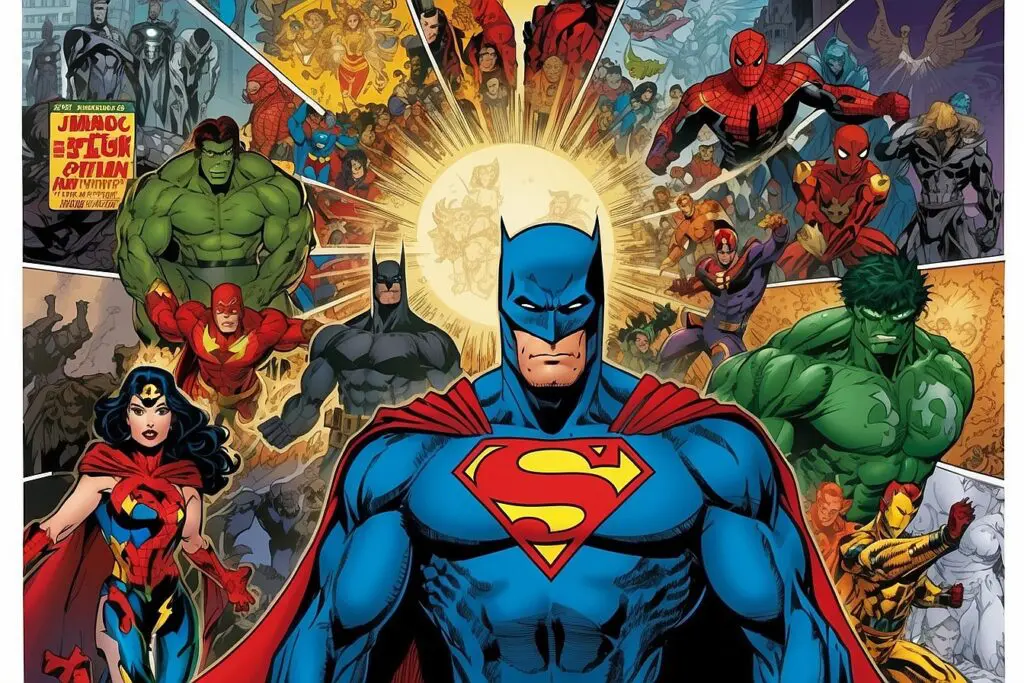
In comic books, the interplay between narrative styles and artistic expression is central to the cultural impact and reception of the work. These aspects—together with the integration of dialogue and use of panels—form a complex tapestry that is an art form in its own right.
Illustrating Stories: The Art of Comics
The art of comics relies heavily on visual storytelling. Panels serve as the canvas through which a story unfolds, featuring a carefully considered layout to guide the reader’s eye. Artists leverage a broad variety of styles, ranging from the intricate shōjo manga with its emphasis on emotion and beauty to the bold lines and dynamic poses characteristic of Western superhero comics. Such artistry is not merely decorative; it’s an essential narrative device that sets the tone and pace of the story.
Dialogue and Drama: Crafting Comic Book Narratives
The narrative of a comic book is conveyed not just visually but also through its dialogue. The written word is as powerful as the visual scenes, with each bubble of conversation advancing the story and revealing character traits. The drama inherent in comic book narratives often reflects broader cultural contexts, creating stories that resonate with readers across the globe and showcase the diversity of human experience. Our understanding of such narratives is deepened through the contexts provided by platforms like Connolly Cove, which celebrates and explores global culture and heritage.
The Business of Comics: Economy and Industry
The comic book industry, a significant player in the global economy, has been shaped by publishing giants and digital transformations alike.
Publishing Powerhouses: Marvel and DC
Marvel and DC, the iconic brands at the forefront of the comic book industry, have long rivalled each other in publication sales. Their influence extends beyond comics into movies, merchandise, and digital media, with Marvel’s cinematic universe being a noteworthy driver of revenue. DC’s robust publishing schedule continually brings beloved characters like Batman and Superman to new generations, sustaining their economic significance.
The Manga Market: Japan’s Publishing Phenomenon
Japan’s contribution to the comic book industry, manga, has an immense market both domestically and internationally. With a distinct art style and storytelling technique, manga publications contribute significantly to the nation’s economy. Renowned series have generated lucrative franchises, influencing sectors from entertainment to retail. Readership has grown steadily, with digital manga facilitating broader global access.
Digital Disruption: The Future of Comic Sales
Digital platforms have introduced a deep disruption in the distribution and sales of comic books. With consumers turning to online subscriptions for their comic content, industry norms are shifting. This transition to digital media has made comics more accessible yet poses challenges for traditional brick-and-mortar retailers. As we forge ahead, digital sales are expected to play an increasingly vital role in shaping the comic book economy.
Iconic Characters and Franchises
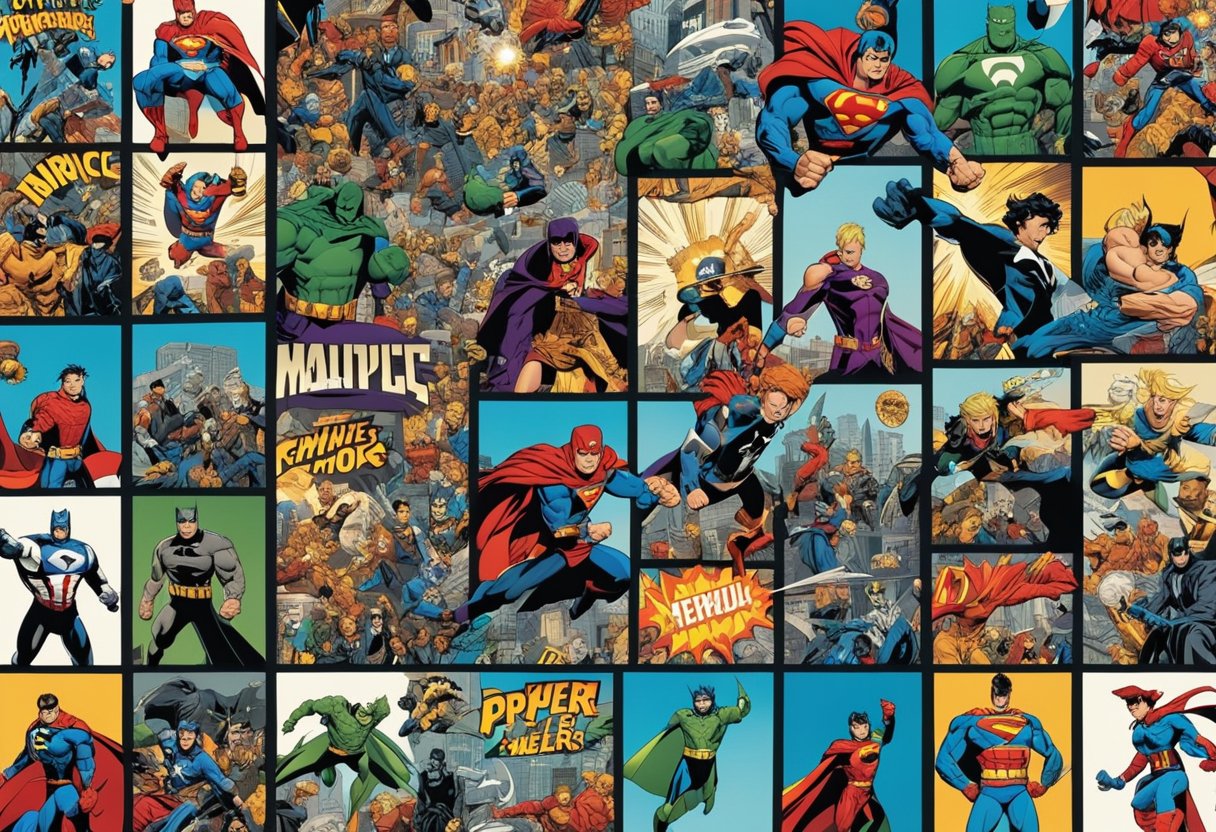
In the vast tapestry of pop culture, comic books have woven some of the most enduring threads, giving rise to iconic characters and franchises that have shaped society and transcended borders.
Superheroes Unmasked: Symbolism and Society
Superheroes have long stood as symbols of hope, justice, and the battle between good and evil. Characters such as Batman have become more than mere vigilantes in capes; they reflect our societal challenges and the complexity of human nature. Debuting in Detective Comics in 1939, Batman’s tale of tragedy and triumph resonates with readers, offering a narrative where an individual can make a difference despite personal adversities.
Superhero teams also embody diverse ideologies and backgrounds, showcasing societal values across eras. They often grapple with issues of identity, politics, and morality, mirroring our world’s struggles and achievements.
Manga and Anime: Japanese Icons Go Global
The influence of Japanese pop culture, with its vibrant manga and anime, is undeniable. Epics like One Piece have captured imaginations worldwide, spinning tales of adventure that emphasise the themes of friendship and persistence. Similarly, Naruto has harnessed the essence of determination and growth, inspiring countless fans with its rich storytelling and layered character development.
Manga has also paved the way for anime, an animated form that complements its printed counterpart, creating multimedia franchises. These works have transcended cultural boundaries, igniting a global fascination with Japanese storytelling techniques and art styles.
Adapting Comics for Film and Television
The transition from the comic book page to the dynamic world of film and television has been a journey of creativity and adaptation. Major studios have successfully expanded the reach of iconic characters, intertwining them with the fabric of modern pop culture.
Blockbusters and Box Office Success
The Marvel Cinematic Universe stands as a formidable example of how superheroes have driven the box office to incredible heights. Films like Avengers: Infinity War and Black Panther have not only shattered opening box-office records but also cemented their place as cultural phenomena. These blockbusters are meticulously crafted, reflecting the pulse of the audience and soaring past traditional expectations of comic book adaptations.
Animated Ambitions: From Panels to Screen
Animation offers a versatile platform for adapting comics into appealing visual narratives. This medium captures the essence of the source material while providing creative freedom to explore complex storylines. Animated adaptations maintain a beloved tradition, from classic 2D portrayals of characters to cutting-edge 3D renderings that push the boundaries of what is possible on screen.
Streaming Stories: Netflix and Beyond
Our viewing habits have evolved with the rise of streaming services like Netflix, which have become a fertile ground for comic book stories. These platforms allow for diverse storytelling, reaching audiences worldwide with series that might not have found a home on traditional broadcast television. This has given rise to an array of adaptations that vary in tone and style, ensuring there’s something for every type of viewer.
Global Impact and International Reach
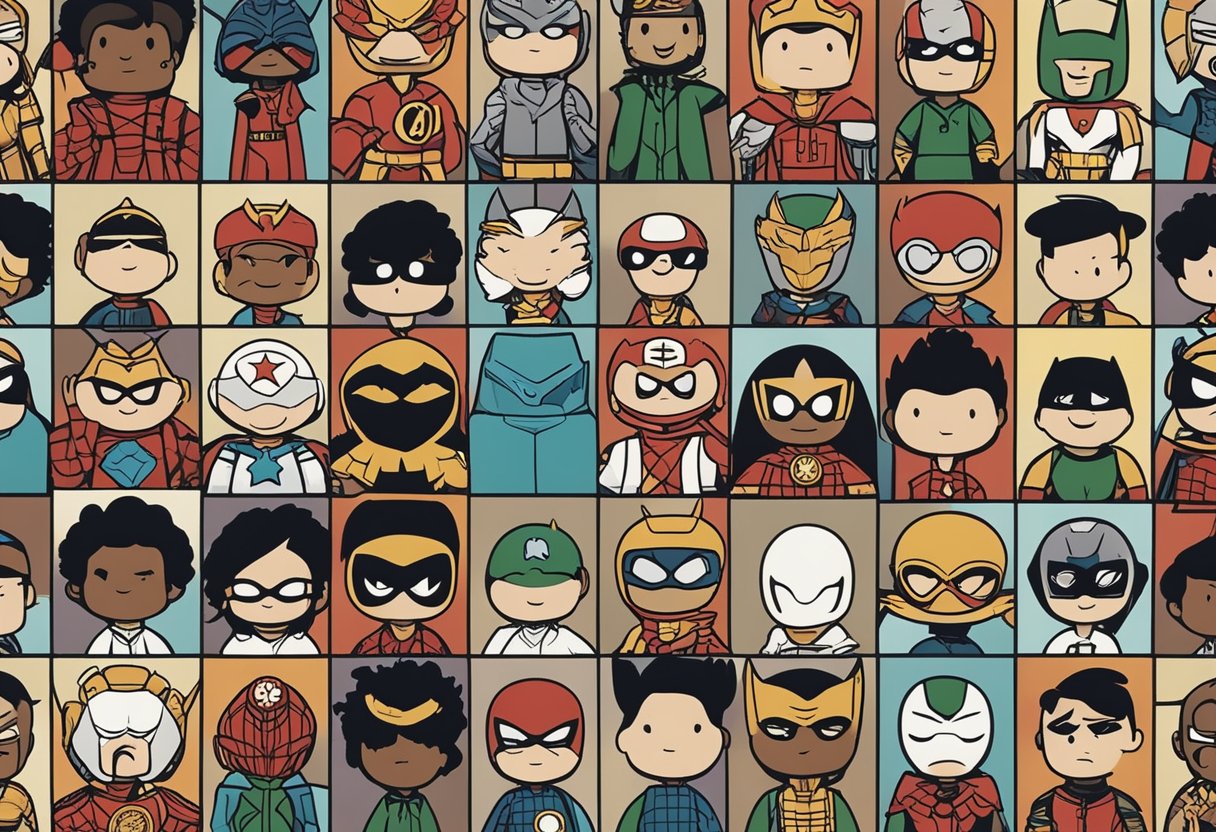
Comic books have revolutionised the concept of storytelling, transforming it into a universally embraced art form. They facilitate cultural exchange on a grand scale and provide a unique medium for language beyond mere words.
East-West Dynamics: Cross-Cultural Exchanges
Japanese manga has been instrumental in bridging cultures. The cultural impact of manga on society encapsulates how it’s become a global phenomenon, with its influence seen in various media beyond Japan’s borders. In the United States, Japanese manga and anime have inspired a new generation of artists and storytellers, leading to a hybrid of styles that resonate with a diverse international audience.
Conversely, American comic book superheroes, icons of US culture, have crossed the Pacific, integrating into Japanese entertainment. Superheroes such as Spider-Man and Batman have achieved notable popularity in Japan, influencing local storytelling traditions and character designs.
The Language of Comics: Beyond English
The universal appeal of comic books transcends linguistic barriers. While English remains a predominant language in the superhero genre, the growth of the medium globally means that stories are now told in numerous languages. The power of visual storytelling has enabled comics to become accessible irrespective of language proficiency, enhancing globalization by sharing narratives across linguistic divides.
Japanese language education has seen a surge in interest due to the popularity of manga internationally. This means people are not only consuming stories but also becoming more engaged with the Japanese culture and language, which in turn strengthens Japan’s cultural export and global presence.
Legal and Ethical Considerations
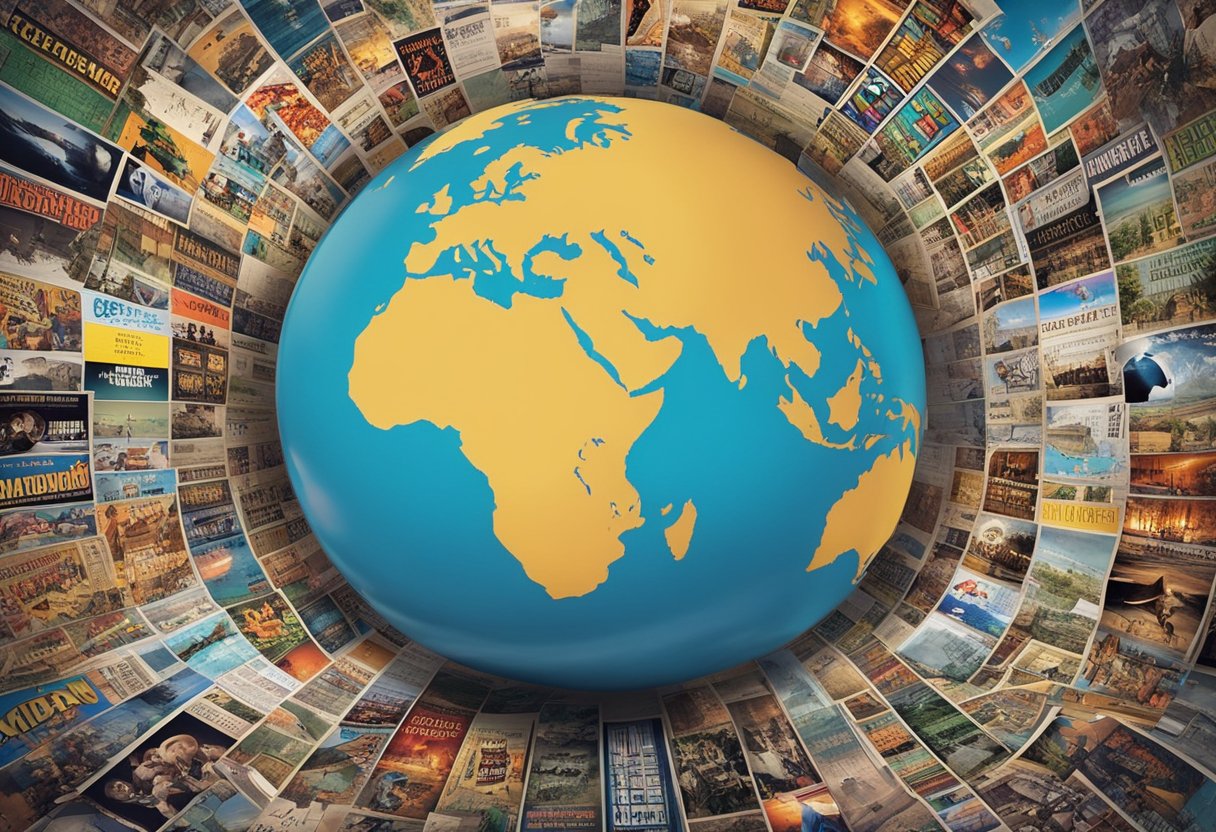
Before exploring specific aspects of legal and ethical concerns within the comic book industry, it is crucial to understand the significance they hold. Intellectual property laws protect creative rights, while ethical considerations often guide the industry’s self-regulation and government censorship.
Intellectual Property and Rights
Intellectual Property (IP) is the cornerstone of the comic book industry. It ensures that creators retain economic rights to their work, allowing them to profit from successful storylines and characters. For example, in the case of Marvel, the company recently reached a settlement in a copyright struggle with artists from the golden age of comics, underscoring the importance of IP in the ongoing viability of comic narratives.
- Creators’ Rights: Typically, artists, writers, and publishers hold copyrights to their characters and stories.
- Economic Benefits: These copyrights grant the right to derive financial gains from their creations.
IP laws have evolved to balance protecting creators’ rights while encouraging innovation and the distribution of works that can enrich society.
Censorship and Regulation: Balancing Creativity and Control
Censorship and regulation present complex challenges in balancing the need for artistic freedom with societal norms. Historically, governments have stepped in to regulate content believed to be harmful or against public morality.
- Censorship Impact:
- Comic Books: Governments have at times deemed certain comics inappropriate, leading to bans or modifications.
- Manga: Japanese manga often faces scrutiny for content, necessitating a delicate balance between cultural acceptance and global norms.
The comic book industry frequently encounters ethical dilemmas, and it must navigate between creative expression and the expectations and laws of various societies. Balancing these often conflicting demands is an ongoing challenge, with industry self-regulation playing a pivotal role alongside governmental oversight.
Emerging Trends and Future Directions
As stalwarts in the industry, we’ve observed that comic books are experiencing a renaissance, influenced by cutting-edge technologies and burgeoning markets. The following subsections elucidate some of the most prominent changes reshaping the world of comics.
Technological Innovations in Comic Creation
The evolution of technology has ushered in novel methods of comic creation, significantly altering how artists conceive and share their work. Utilising advanced software, creators can now weave intricate narratives with enhanced digital artistry that captivates audiences like never before. These innovations are not only changing the aesthetic quality of comics but also the speed and efficiency with which they are produced.
Digital distribution platforms have revolutionised access, allowing readers worldwide to instantly download the latest issues, often in multiple languages. This paradigm shift has expanded the market reach and has fuelled a trend of innovation where interactive comics offer immersive experiences through animation and sound, blurring the lines between traditional comics and other media forms.
Evolving Genres and New Markets
The diversification of genres is significant; not only superheroes but also an array of themes from indie to manga are capturing the hearts and imaginations of new audiences. Trends indicate a rise in genres that challenge the status quo, like non-fiction comics and those addressing contemporary social issues, which are gaining traction and broadening the scope of what can be conveyed through the medium.
Simultaneously, the market is pushing beyond its previously perceived boundaries, with a notable increase in global demand. Asian markets, particularly for manga, have seen exponential growth, offering a wide variety of stories and art styles that resonate with international audiences. The evolution of readers’ tastes and the cross-pollination of cultures in the digital realm are paving the way for a new era of global comic book consumption, reflective of our diverse societies.
Impact of Comics on Other Industries

In our exploration of comics’ influence beyond their pages, we see significant growth in sectors such as fashion and interactive media.
Fashion and Cosplay: A Style Revolution
We’ve witnessed a style revolution inspired by the vivid visuals of comic books. The industry has seen a surge in clothing and accessories modelled after iconic superhero costumes, permeating mainstream fashion and giving rise to the cosplay phenomenon. This sartorial influence extends to high fashion, where designers integrate motifs from comic book culture into their collections, blending pop art aesthetics with haute couture.
Video Games and Interactive Media
The video games industry intertwines closely with comic books, translating fantastical narratives into immersive experiences. Iconic characters and stories leap from the page to the digital realm, shaping games that often become cultural landmarks themselves. The synergy between these mediums fosters a shared language and visual style that resonates across global culture, influencing both game design and gamer communities.
Frequently Asked Questions
In this section, we address some of the most common inquiries about the expansive influence of comic books around the world, particularly focusing on the impact of manga and the evolution of the superhero genre.
What factors have contributed to the rise of manga on a global scale?
Manga’s rise can be attributed to its unique storytelling style, diverse genres and themes that appeal to a wide audience, and its accessibility through various media outlets. Additionally, the globalisation of Japanese culture through anime and video games has played a crucial role.
In what ways have manga sales surpassed those of traditional American comics?
Manga sales have seen a marked increase, often overtaking American comics in global markets due to widespread translation, the proliferation of digital platforms, and the appeal of their broad thematic content that resonates with international readers.
How have comic books transformed the world culturally and socially?
Comic books have been a platform for addressing real-world social issues and facilitating discourse on topics like racism, gender equality, and mental health while also shaping cultural norms and fostering a sense of community among readers.
What are the key differences between American comics and Japanese manga?
Fundamental differences lie in art style, storytelling, and publication. American comics typically feature muscular superheroes with a linear narrative, whereas manga is known for its diverse art styles, often emphasising emotional expression and serialized storytelling.
How has manga’s popularity influenced the comic book industry?
The popularity of manga has prompted the comic book industry to diversify narratives, character designs, and themes. It has also encouraged the adoption of new publishing models, such as graphic novels and the digital distribution of comic content.
To what extent did American comics play a role in shaping manga?
American comics played a considerable role in shaping manga post-World War II, introducing the concept of the superhero and influencing manga art styles. However, manga has evolved distinctively, bringing its own aesthetic and thematic depth to the art form.





